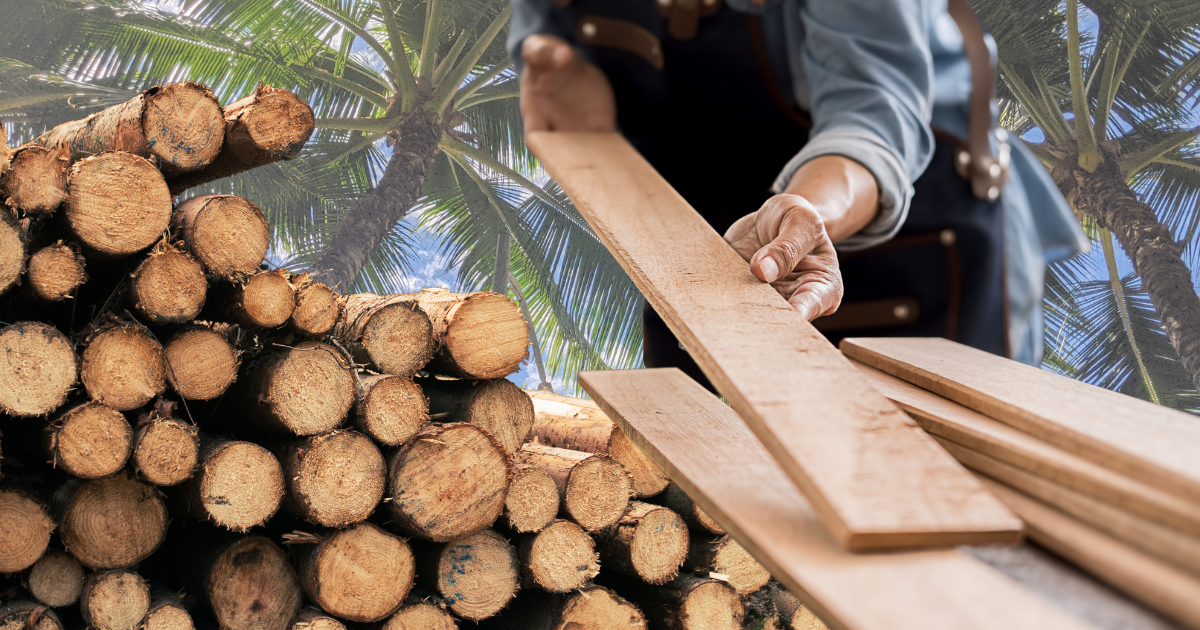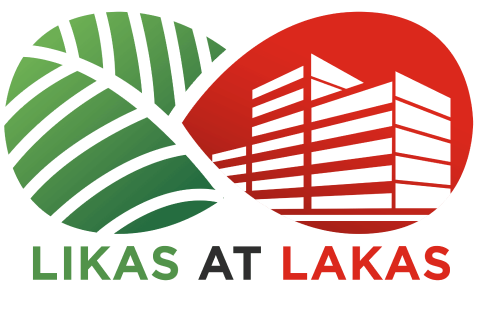Coco lumber is becoming a go-to choice for builders and craftsmen. Sourced from coconut trees (locally ‘puno ng niyog’), this timber makes use of coconut trees that have reached the end of their fruit-bearing years. Instead of chopping the tree down and throwing it away, coconut tree trunks are given a new life as they are repurposed into durable and sustainable wood.
In the Philippines, coco lumber is widely available in many regions, making it an accessible alternative to traditional hardwood. Its affordability and workability make it ideal for furniture, construction, and creative builds.
In this article, we will share five reasons why coco lumber is gaining popularity and why it could be the perfect choice for your next project.

What is Coco Lumber?
Coco lumber comes from coconut trees that have stopped bearing fruit, usually around 70 years old. Instead of going to waste, these trees are turned into timber with varying densities, making them useful for different applications in the construction industry.
High-density sections are ideal for structural components, while medium-density ones are great for furniture and decorative pieces, proving that not only is coco lumber sustainable, but also versatile and can be used in various projects.
5 Reasons Why Many Are Choosing Coco Lumber for Their Projects
Coco lumber isn’t just an alternative to traditional wood. Local builders, designers, and manufacturers in the Philippines have been using the material for decades, increasing its popularity since the 80s. Its affordability, sustainability, and versatility make it a practical option for various projects.
Here are five reasons why more people are choosing coco lumber.
1. Coco Lumber Is a Cost-Effective Alternative
One of the most significant advantages of coco lumber is that it is considerably cheaper than other wood. Compared to timber like tanguile and apitong, coco lumber is much more of a budget-friendly option, making it an attractive choice for homeowners, builders, and large-scale construction projects.
2. Sustainable and Eco-Friendly
Coco lumber is a by-product of the coconut industry, making it an environmentally friendly material. The process of turning coconut trees into lumber reduces waste, and using this type of timber helps promote sustainable construction practices.
Coconut trees are abundant in tropical regions, particularly in the Philippines. This makes coco lumber a renewable resource that supports eco-conscious building efforts. This solution benefits both the environment and the construction industry.
3. Durable and Reliable for Construction
Despite its affordability, coco lumber does not compromise the durability of projects. Higher-density coco lumber has an impressive structural strength, making it ideal for trusses, beams, and even flooring. With proper treatment, coco lumber is resistant to decay, insects, and harsh weather, which makes it a reliable choice for both residential and commercial construction. Coco lumber can endure over time, regardless of the size of the building.
4. Versatile Applications Across Industries
Coco lumber is also an outstanding material for industries beyond construction. Its unique grain, durability, and affordability make it a popular choice for different applications, including:
Construction & Architecture
- Structural support for houses, such as beams and trusses
- Flooring and wall panels for a rustic aesthetic
- Scaffolding and temporary structures for construction sites
Furniture & Interior Design
- Tables, chairs, and cabinets with a natural wood finish
- Decorative wall panels and accents
- Wooden flooring that offers a warm, tropical appeal
Industrial & Manufacturing
- Pallets for shipping and storage solutions
- Cement-bonded boards for lightweight, durable walls
- Power poles and fencing materials
Eco-Friendly & Sustainable Products
- Recycled wood-based home decor and handicrafts
- Upcycled materials for green building initiatives
- Sustainable alternatives to traditional hardwoods
The adoption of coco lumber continues to drive its demand across different markets, proving its value as a sustainable and cost-effective material for various industries.
5. Strong Market Demand and Growing Popularity
As more people and industries recognize the benefits of coco lumber, demand for the material keeps growing. It’s especially popular in regions where affordable housing is a priority, and international markets are starting to see its value—particularly in the furniture industry. With this rising interest, the supply of coco lumber is expected to keep expanding, making it an increasingly accessible and reliable choice for builders and manufacturers.

Why Coco Lumber is the Smart Choice
Coco lumber offers a compelling combination of affordability, sustainability, durability, versatility, and a strong market presence. Whether you’re working on a large construction project or looking for unique furniture pieces, coco lumber provides a sustainable and practical solution. As demand grows and more industries adopt this eco-friendly material, it’s clear that coco lumber is the way forward for many of today’s projects.
Reference:
Fathi, L., Hasanagić, R., Bjelić, A., & Bahmani, M. (2023). Performance of coconut wood in timber structures: A review of its properties and applications. IOP Conference Series: Materials Science and Engineering, 1298(1), 012014. https://doi.org/10.1088/1757-899X/1298/1/012014
Wikipedia contributors. (n.d.). Coconut timber. Wikipedia, The Free Encyclopedia. Retrieved February 5, 2025, from https://en.wikipedia.org/wiki/Coconut_timber
International Tropical Timber Organization. (n.d.). Cocowood utilization in the Philippines (Project Document PD 17/92 Rev.3 (I)). https://www.itto.int/files/user/pdf/publications/PD17%2092/pd%2017-92-3%20(I)%20e.pdf
Food and Agriculture Organization of the United Nations. (n.d.). Use of coconut timber from senile plantations [Webpage]. FAO. Retrieved February 5, 2025, from https://www.fao.org/4/w7731e/w7731e04.htm#:~:text=In%20the%20construction%20of%20big,a%20suitable%20material%20for%20pallets.










